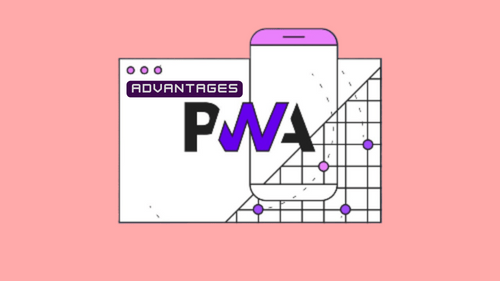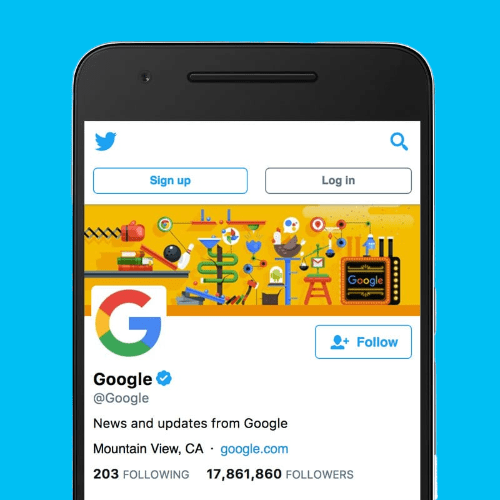Explore the fascinating world of Progressive Web Apps (PWAs), where the internet is changed into a seamless experience with unmatched dependability, speed, and smoothness. PWAs are the most advanced form of web development because they combine the functionality and performance of a native application with the accessibility of a website in a seamless manner.
Think about having instant loading times, extremely smooth animations, and faultless interactions at your finger tips. Regardless of network constraints, PWAs use the power of contemporary web technologies to create blazingly fast experiences. When offline functionality is enabled by service workers, users can continue to engage with content even when they are not connected to the internet.
However, PWAs’ brilliance doesn’t end there. These cutting-edge apps make use of responsive design concepts to seamlessly adjust to any screen size or device, guaranteeing a consistent and enjoyable user experience on all platforms. Push notifications let users stay informed and engaged even when they’re not actively using the app, which increases user engagement.
PWAs are transforming how we connect with the web in today’s fast-paced digital environment by enabling companies to create immersive experiences that fascinate and delight customers. Come along with us as we explore the endless possibilities of PWAs—where dependability, speed, and smoothness come together to produce digital experiences that are truly memorable.
Advantages of Progressive Web Apps (PWAs)

1. Cross-Platform Compatibility: PWAs function flawlessly across a variety of operating systems and hardware, such as tablets, smartphones, and PCs. They save businesses time and money by removing the need to create unique apps for each platform.
2. Offline Functionality: PWAs are able to function offline or with intermittent connectivity. This feature improves accessibility and user experience by enabling users to access material and functions even when they are not online.
3. Quick Loading Times: PWAs are made to load quickly, giving users a responsive and seamless experience. PWAs make sure that content is provided to consumers quickly by utilizing caching and other optimization techniques, which lowers bounce rates and increases engagement.
4. Push Notification Engagement: PWAs facilitate push notifications, which enables companies to bring consumers back to their app and increase user engagement. Personalized messaging and updates are made possible by this feature, which keeps users informed and interested even when they aren’t actively using the app.
5. Better Discoverability and Accessibility: PWAs can be accessed via a URL, just like regular websites, and are easily found through search engines. Users can locate and use PWAs more easily thanks to this accessibility, which boosts traffic and increases brand awareness for companies. PWAs can be accessed by a variety of users, including those with impairments, because they are also compatible with screen readers and other assistive devices.
Disadvantages of Progressive Web Apps (PWAs)

1. Limited Device Functionality: Compared to native apps, PWAs might not have access to all of the features and functionalities of the device. The range of sophisticated functionalities that PWAs may accomplish in comparison to their native counterparts may be limited, such as the ability to access particular hardware components or sensors.
2. Dependency on Browser Support: For some features and functionalities, PWAs significantly rely on browser support. Although PWAs are supported by the majority of modern browsers, users may encounter inconsistent results due to differences in compatibility and performance between browser versions and platforms.
3. Limited Market Reach: Although PWAs are cross-platform compatible, customers who prefer native app stores for app discovery and download may find it difficult to use them. This restriction may have an effect on users’ visibility and adoption rates, particularly if they are unfamiliar with PWAs or would rather use more conventional app distribution methods.
4. Security Issues: Because PWAs are developed with web technologies, they might be vulnerable to typical web-based security flaws like cross-site request forgery (CSRF) and cross-site scripting (XSS). The nature of web-based applications brings inherent security vulnerabilities that may require continual monitoring and upgrades to resolve, even if developers can incorporate security measures to alleviate these risks.
The Differences Between Native Apps and PWAs

1. Development Approach
Native Apps: Developed using platform-specific programming languages (e.g., Java/Kotlin for Android, and Swift for iOS) and tailored for a single platform (e.g., iOS or Android).
PWAs: Web technologies (HTML, CSS, JavaScript) were used in their development, and they work on any platform that has a browser that complies with standards.
2. Distribution
Native Apps: Distributed via app stores tailored to a particular platform (e.g., Google Play Store, Apple App Store).
PWAs: Put straight onto the device’s home screen and accessed via a URL, negating the necessity for app store distribution.
3. Access to Device Features
Native Apps: Having access to a large number of APIs and device features, including as the accelerometer, GPS, camera, and more.
PWAs: Having less access to device features than native apps, but new web APIs are boosting their capabilities. With certain restrictions, they can use capabilities like the camera, GPS, and push notifications.
4. Performance
Native Apps: Because of direct access to device hardware and optimized code, often provide greater speed and smoother user experiences, especially for graphics-intensive applications.
PWAs: The complexity of the application and the capabilities of the browser can affect performance. PWAs have the potential to perform well, but they might not always be as snappy and optimized as native apps.
5. Offline Functionality
Native Apps: Can provide a wide range of offline features, with the app having integrated data synchronization and storage.
PWAs: By using service workers to support offline functionality, some app features can be accessed even when there isn’t an internet connection. However, in contrast to native apps, offline functionality could be more constrained.
6. Updates
Native Apps: Updates are handled through submissions to the app store, and downloading and installing them sometimes need user assistance.
PWAs: Revisions are immediately reflected when you return to the application, and updates are smooth and automatic. This eliminates the need for manual upgrades by guaranteeing users always have access to the most recent version.
Best Examples for Progressive Web Apps (PWAs)

1. Twitter Lite: Twitter Lite is a condensed version of the software that is intended to be quick and easy to use, particularly in areas where internet connections are sluggish. It has a nicer user interface and uses less data while offering many of the capabilities of the native app. Twitter Lite uses push notifications for real-time updates, a responsive design that adjusts to multiple screen sizes, and service workers to enable offline functionality.

2. Flipkart: One of the biggest e-commerce sites in India, Flipkart, has used PWAs to reach people on a variety of devices and in a variety of network situations. With features like seamless navigation, rapid loading times, and offline support for product browsing and basket additions, the Flipkart PWA provides a speedy and entertaining shopping experience. Flipkart has greatly increased user engagement and conversion rates by utilizing PWAs, especially for users in places with spotty connectivity.
Top Frameworks for Progressive Web Apps in 2024
1. Angular: Google maintains the popular front-end framework Angular. It offers an extensive feature set and tool set for creating reliable web apps, including PWAs. Angular comes with built-in support for caching techniques, offline capabilities, and the creation of service workers. Additionally, it offers tools like Angular Material for UI elements, Angular Universal for server-side rendering, and Angular CLI for effective scaffolding and project management.

2. React: Facebook also developed the well-known JavaScript package React, which is used to create user interfaces. React is incredibly flexible and works well for building PWAs. Tools like Create React App for project bootstrapping, React Router for navigation, and React Hooks for state and side effect management are all part of the React ecosystem. Developers can offer offline capabilities and boost speed by integrating service workers into React applications using libraries like Workbox or sw-precache.
Bottom Line: We depart from our intensive exploration of Progressive Web Apps (PWAs) having gained a deep appreciation for the seemingly endless possibilities they present. PWAs modify web development from the ground up, offering seamless experiences and improved accessibility. Let’s apply our newly acquired knowledge and creativity to create a digital environment where dependability, speed, and smoothness are the norm rather than simply the ideal. Even when the journey is over, PWAs have a lasting effect.
Adlivetech website design services create a perfect blend of design aspects for its clients to design a masterpiece that can convey a brand message and curve a strong digital presence of the business.
DM us for any query and quick help.
Email: info@adlivetech.com
Whatsapp: Link
